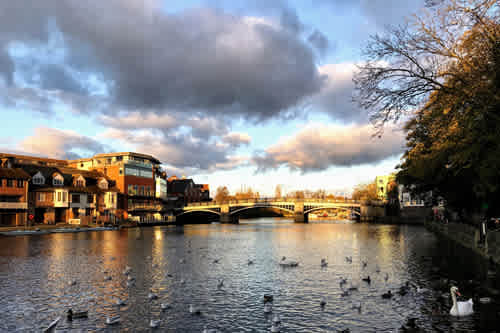About Hampshire And Dorset
Two of the loveliest counties in southern England, each with their own personality and historical sites of interest, are Hampshire and Dorset.
Hampshire is loved for its many picturesque villages and market towns, as well as the capital city Winchester with the Gothic Winchester Cathedral, one of the largest in Europe. Added on at a later period is what is known as “The Great Hall”, listed as a Grade I building and where you’ll see hanging on the wall, the “piece de resistance”- King Arthur’s “Round of the Knights’ table.
As for charming Dorset, with its high cliffs and seaside towns, the main attraction is the Jurassic Coast, a UNESCO World Heritage Site, home to some of the most breathtaking scenery in the UK. In both Hampshire and Dorset, you will be welcomed by the warm hospitality of the people, enjoy the local cuisine, participate in various activities and visit castles, historic sites and natural landscapes.
Hampshire and Dorset are two counties, associated with the ancient Kingdom of Wessex. In the late 9th century while Alfred the Great ruled, Winchester was made the capital town and became known as a center of learning.
The Cathedral Church of the Holy Trinity, Saint Peter, Saint Paul and Saint Swithun, aka Winchester Cathedral, is a Gothic Cathedral, one of the largest in Europe. For our literary buffs, you should know that the cathedral is also the final resting place of the famous writer Jane Austin.
Only the round tower exists from what was once the Winchester Castle. However, the great hall was added on later and is protected today as a Grade I listed building. Hanging on the wall in the hall, is the “piece de resistance”- King Arthur’s table: 5.5 meters in diameter and weighing in at 1.2 tons.
Note: A Grade 1 listing (of which there are only 2.5% of all graded buildings/sites) is one that is considered to be significantly unique, historically and exceptionally architecturally important.
The cities of Southampton and Portsmouth are known for their seafaring heritage. Southampton is a busy cruise ship terminal that was once the departure port of the Mayflower and Titanic. Portsmouth, the biggest naval base of the British Navy is also home to the must-see National Museum of the Royal Navy. The museum exhibits the HMS Victory – Admiral Nelson's flag ship.
Dorset- the western region out of the two, has much to offer. Its main natural attraction, the Jurassic Coast, which is the first to be listed as a UNESCO Natural World Heritage site, stretching 95 miles. The coast has unique scenery that presents millions of years of earth's geological features. Sea stacks stand proudly off the Jurassic coast and one can stroll along the stretches of sandy beaches or follow the walking paths past quaint villages.
Straddling the counties of Dorset and Hampshire as well, the Cranborne Chase is a designated AONB (Area of Outstanding Natural Beauty) (AONB). It covers 380 square miles of countryside, offering wildlife sightseeing, as well as hiking and cycling path. Dorset also has a Dark Sky Reserve, an area that is “far from civilization” so that there is not even a hint of any light to interfere with the dark skies, which is vital for star gazing.
Dorset has many castles, forts and stately homes, including Henry VIII's Coastal Fort–Portland Castle, Highcliffe Castle, and the ruins of Corfe Castle.
The Corfe Castle is in the town by the same name and an added delightful treat is to visit the Corfe Castle Model Village, not unlike Madurodam in Holland. So, if you’re curious to see what the Corfe castle and the town looked like in 1646 – then visit the (1/20th scale) model which is in
the center of Corfe Castle Town. Don’t leave the area before you have a relaxing break in the Courtyard Café and Tea Room.
Shopping lovers will enjoy Dorset's market towns, as well as many vintage and antique shops.






